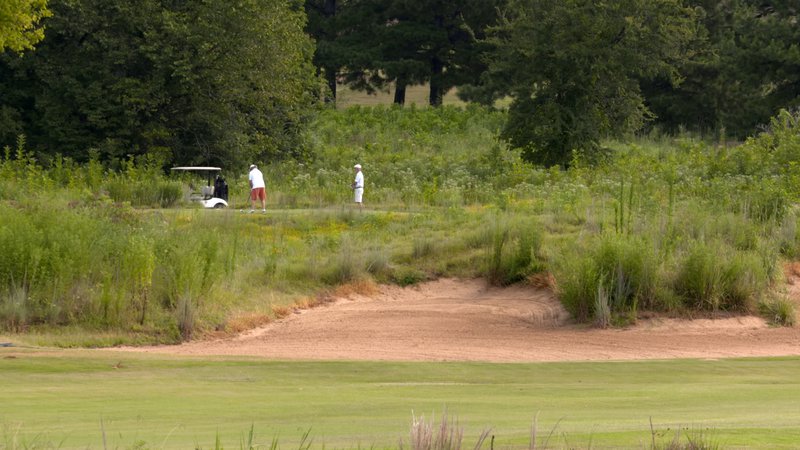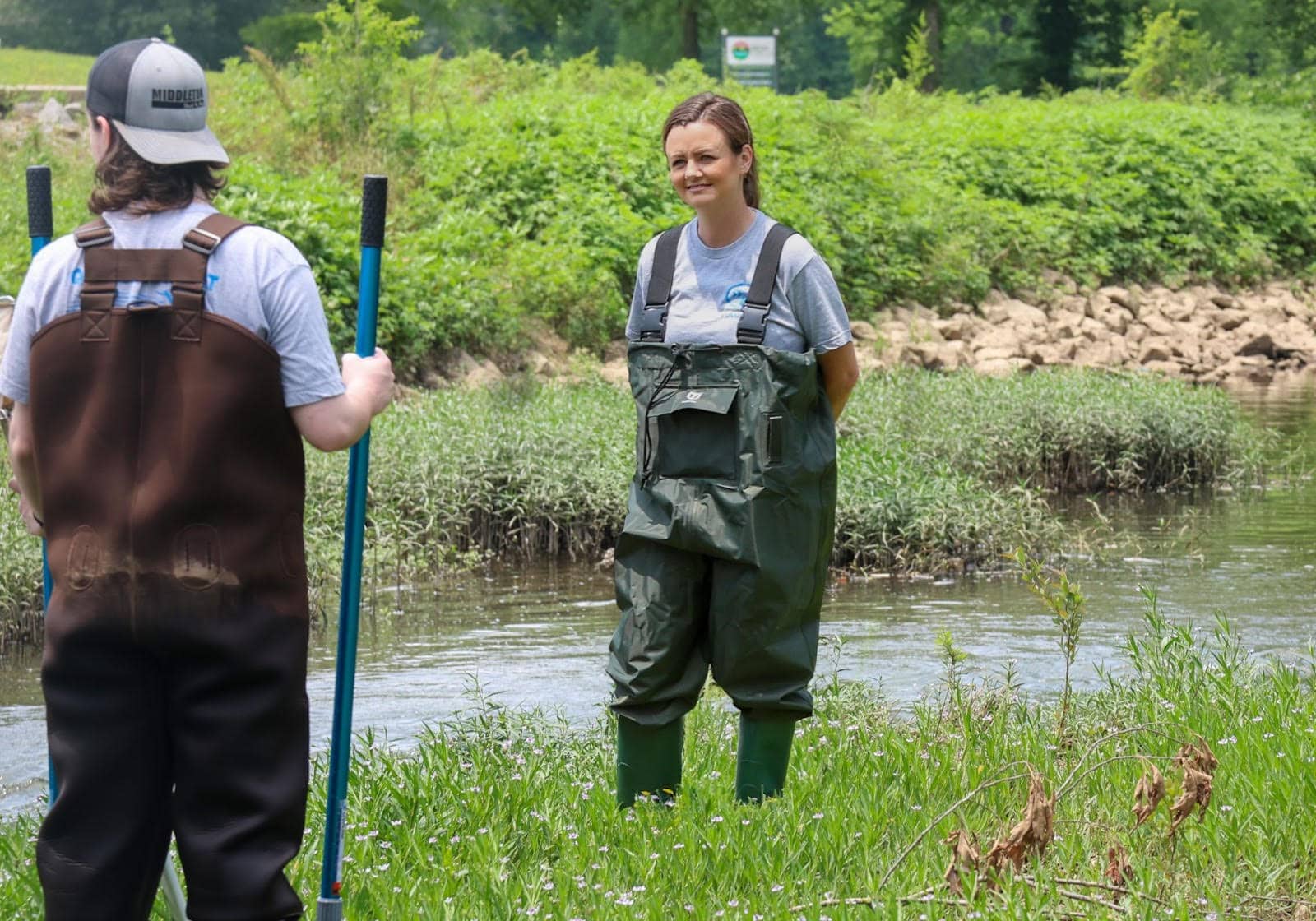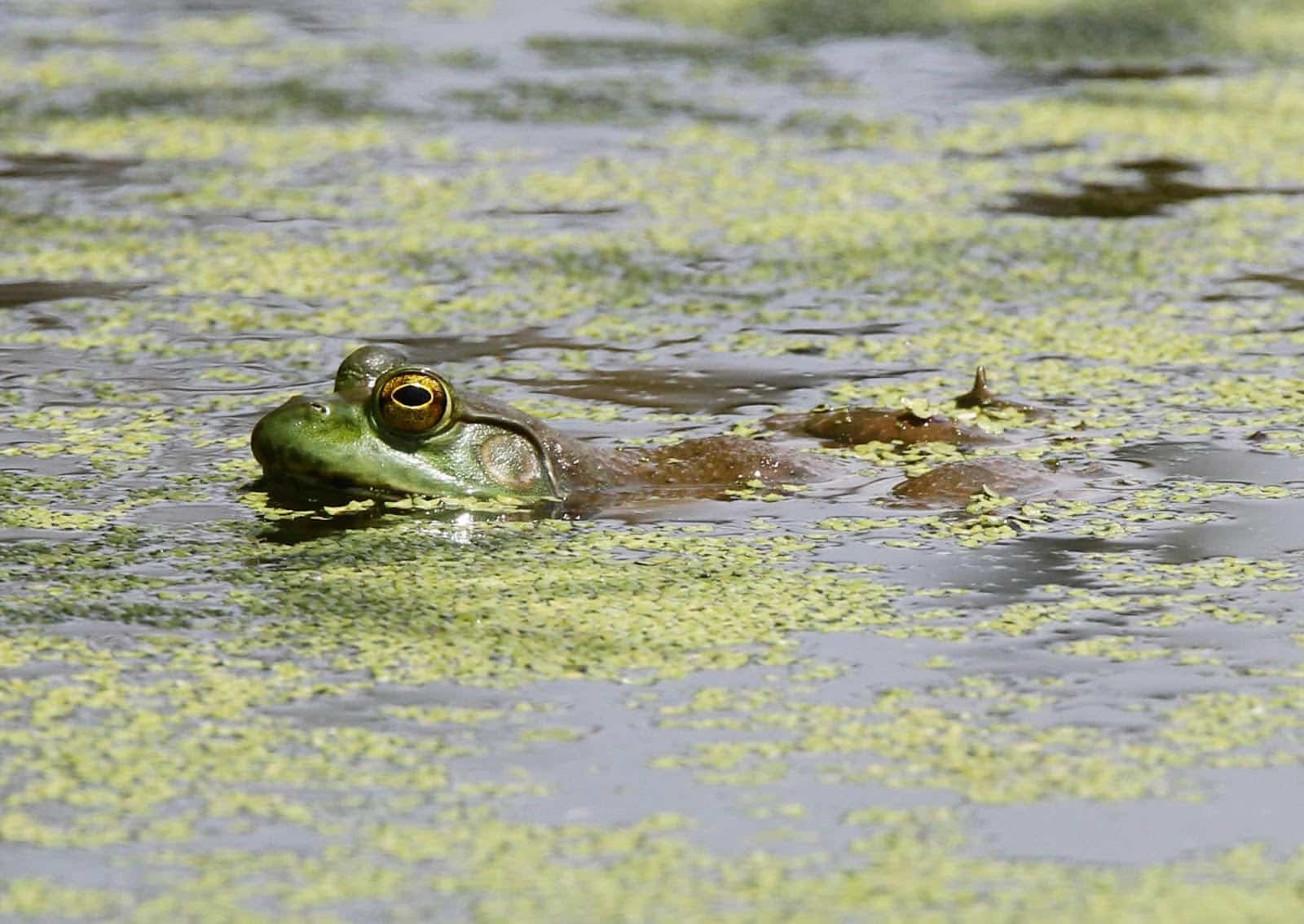Fort Smith golf course teeing up habitat for bobwhite
BY agfc
ON 03-14-2018

March 14, 2018
FORT SMITH – Ask any wildlife biologist where they may find quail, and the last place you’d expect would likely be a golf course. Well-manicured fairways with small flags nearly anyone could spot from 400 yards sound like ideal hunting grounds for avian predators such as a hawk. But these manicured fairways aren’t the entire picture. Nearly every golf course contains “rough” spaces which add some degree of difficulty into the game. With a little forethought and planning, these unkempt spaces also can provide critical habitat for many wildlife species such as quail, and do it at a reduced maintenance cost for golf-course owners.
A few years ago, the superintendent of the Ben Geren Golf Course in Fort Smith decided to change up his management approach to maintaining the course.
“Roughs” were strategically converted to native grasses and wildflowers, which require much less maintenance than introduced species once established.
“Grasses like big bluestem and little bluestem are very drought tolerant and require little to no nutrients added to the soil because they are already adapted to the conditions,” said Levi Horrell, assistant regional supervisor for the Arkansas Game and Fish Commission at its Beaver Lake Regional Office. “They also improve local water quality by increased filtration and less fertilizer runoff. In the case of Ben Geren, the restoration plan has even been thought out in such a way that there is connectivity between native patches, allowing wildlife to more feasibly move across the course.”
Bobwhite Quail are just one species that has already responded to the restoration. Quail not only are game animals that have experienced significant declines in recent years, but they are indicators of habitat quality. Wildflowers that produce cover and forage for quail also support a wide variety of songbirds and even butterflies such as the Monarch. With many species seeing declines due to human development and changes in land use, creativity in our efforts to maintain or restore wildlife populations is critical.
The Arkansas Game and Fish Commission’s Acres For Wildlife program can even provide technical assistance, seed and herbicide to restore native vegetation on private land. In this case, assistance was provided to the Ben Geren Golf Course to support their efforts in restoring portions of the property. In addition to the northern bobwhite restoration, the land’s historical purpose played a key role in its restoration.
“The property is situated on what was once part of the Massard Prairie,” Horrell said. “This prairie has now essentially been developed over and looks nothing like it once did. As a result, many wildlife and plant species that were native to the area are now either gone or increasingly hard to find.”
One flower species in the area (Nuttall’s pleatleaf) is so rare that Ben Geren is one of only a handful of places in the state where it is known to be found and it waits for only one perfect moment out of the year to bloom (after approximately three hours the entire event is over). However, with work like what is occurring at Ben Geren, the area will not only continue to provide enjoyment to the people who visit, it will also provide some protected space for the plants and animals that belong there.
Thanks to the success of this golf course conversion, the AGFC has planned a special meeting with the Golf Course Supertintendents Association of Arkansas this month to share the methods used to improve habitat and lower maintenance cost and discuss ways the AGFC can expand some of its resources toward these diamonds in the rough.
Visit www.agfc.com/habitat for more information on how you can restore habitat for quail or other wildlife on your land.
Recent News

New AGFC education chief already knows the territory
Apr. 16, 2024

Arkansas bullfrog season underway
Apr. 15, 2024
Subscribe to Our Weekly Newsletter E-mails
Don’t miss another issue. Sign up now to receive the AGFC Wildlife Weekly Newsletter in your mailbox every Wednesday afternoon (Waterfowl Reports are published weekly during waterfowl season and periodically outside the season). Fishing Reports arrive on Thursdays. Fill in the following fields and hit submit. Thanks, and welcome!
